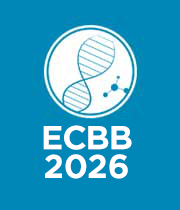Title: Exploration of nanoformulated phytocompound against fibrogenic mineral dust-induced pneumoconiosis
Abstract:
Nanoparticular drug delivery is widely studied system to transport a broad range of synthetic drugs, bio-molecules, and natural compounds into the body. However, constant intake of the occupational dose of mineral-rich dust is dangerous, often leading to one of the diseases such as pneumoconiosis. It is a group of fibrotic lung disease such as coal workers’ pneumoconiosis (CWP) and silicosis. Coal is a heterogeneous compound contain many trace elements which has major role in the toxicity assigned towards the lungs. The bioavailable iron (BAI) is an active agent associated with CWP. Moreover, work-place silica dust exposure may lead to progressive lung inflammation culminating in the silicosis development. Pneumoconiosis has no cure and the treatment options are also limited. Our work suggested that coal dust BAI and respirable silica dust (RSD) inhalation exposure can probably impair oxygen diffusion and induce inflammation in the lungs. Therefore, adverse effects of exposure to BAI and RSD on the lung cells were investigated regarding epithelial layer integrity, cytotoxicity, and pro-inflammatory responses. However, based on fibrogenic mineral dust toxicity we further investigated nanoencapsulated herbal compound on in vivo silicosis model. We initiated with submerged exposure of human alveolar epithelial cell line (A549) to coal dust BAI content with low (275 ppm), moderate (4650 ppm) and high (9065 ppm) and RSD exposed to male wistar rats at dose 100mg/kg to gain a basic understanding of their toxicity. However, particulate poly-lactic-co-glycolic acid (PLGA) as drug carrier used for nanoencapsulation of herbal steroidal sapogenin Diosgenin (DN) and anthraquinone Emodin (EN). Cytotoxic effects were evaluated using various parameters which include oxidative stress markers and genotoxicity parameters. We observed a dose dependent increase in cellular cytotoxicity after induction with fixed coal concentration with varying BAI content. Among the cytotoxicity markers, oxidative stress markers and genotoxicity parameters showed dose dependent increase with increase in concentration of BAI in coal dust. Moreover, the cell counts in lung lavage fluid from nanoencapsulated DN and EN treated rats suggest that it has decrease the cytotoxic effects in lungs. We demonstrated that nanoencapsulated DN and EN treatment inhibit inflammation, and decreased production of collagen, which may be attributed to its regulation of cytotoxicity, collagen deposition and antioxidants enzyme concentration in tissue homogenate. This study results corroborate findings in the human exposure study that inhalation of BAI coal dust and RSD may induce lung toxicity, reflecting the potential health hazards. Moreover, this work represents the first effective use of nanoencapsulated DN and EN treatments promote the environmental mineral-rich dust exposure to lung and the alleviation of inflammation in cases of pneumoconiosis.
Audience Take Away Notes:
- The contents of the presentation will be able to provide the audience with the necessary information regarding bioavailable iron in coal mine dust and environmental respirable silica dust induced lung fibrosis
- This study will helpful not only to biotechnologist engaged in research and teaching but also to those industries to produce new drugs or reposition some existing ones
- This study will be able to provide the necessary tools to understand the needs of clinician assisting them by designing and producing diagnostic and treatment tools to be applied in nanomedicine
The audience will be also able to see the usefulness of characteristics and pharmacokinetics data reveal the efficacy of phytocompounds to be suitable nano-drug delivery modalities with improved bioavailability and pharmacological strength.



